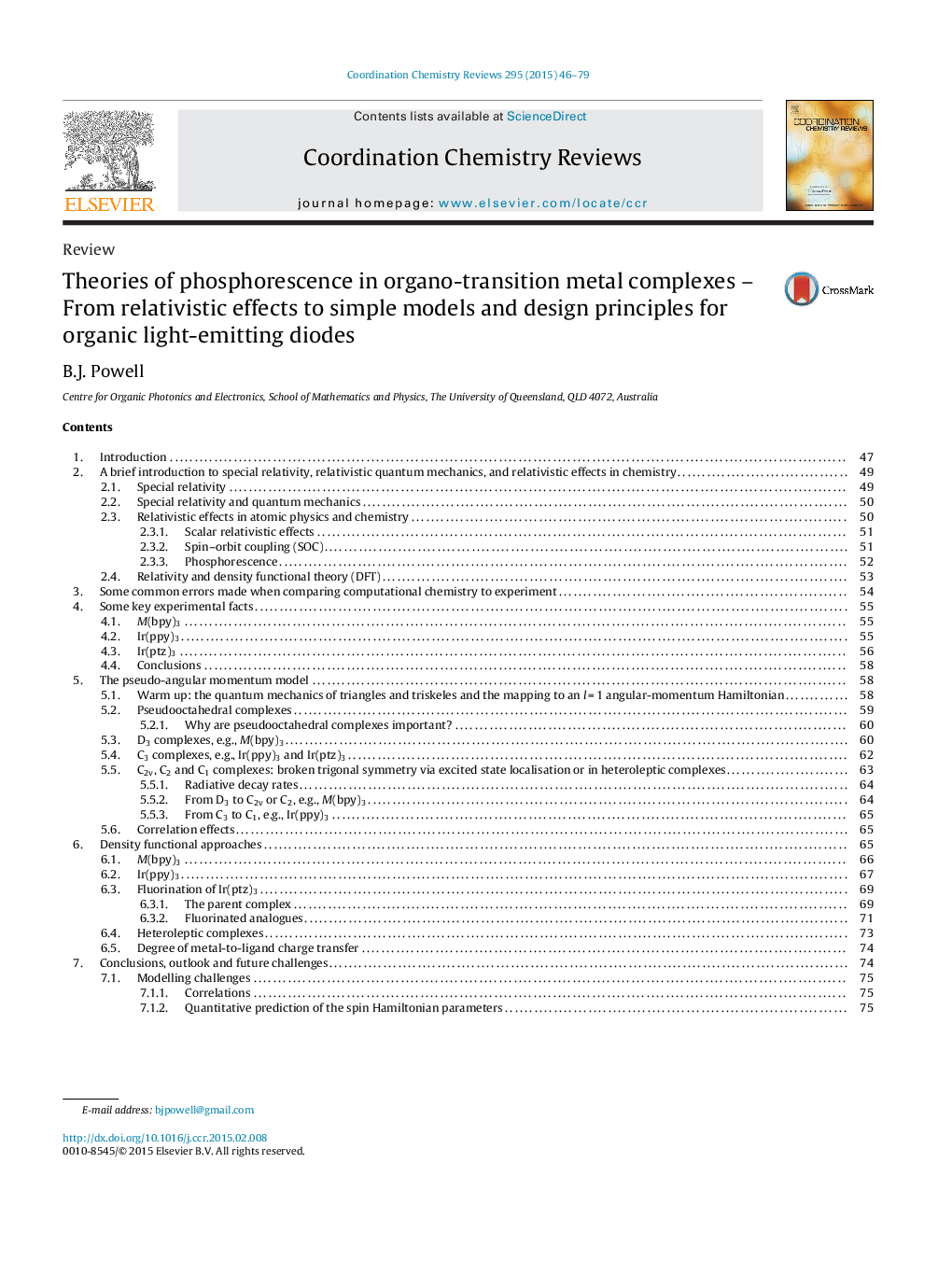| کد مقاله | کد نشریه | سال انتشار | مقاله انگلیسی | نسخه تمام متن |
|---|---|---|---|---|
| 1300258 | 1498725 | 2015 | 34 صفحه PDF | دانلود رایگان |
• Trigonal pseudooctahedral 5d6 complexes with mixed MLCT–LC excitations phosphoresce strongly.
• The pseudo-angular momentum model provides a framework for understanding the phosphorescence.
• Both scalar relativistic effects and spin–orbit coupling play key roles.
• TDDFT accurately predicts the ZFS and radiative decay rates of the substates of T1.
• Accurate predictions of the non-radiative rates are the outstanding challenge in materials design.
We review theories of phosphorescence in cyclometalated complexes. We focus primarily on pseudooctahedrally coordinated t2g6 metals (e.g., [Os(II)(bpy)3]2+, Ir(III)(ppy)3 and Ir(III)(ptz)3) as, for reasons that are explored in detail, these show particularly strong phosphorescence. We discuss both first principles approaches and semi-empirical models, e.g., ligand field theory. We show that together these provide a clear understanding of the photophysics and in particular the lowest energy triplet excitation, T1. In order to build a good model relativistic effects need to be included. The role of spin–orbit coupling is well-known, but scalar relativistic effects are also large – and are therefore also introduced and discussed. No expertise in special relativity or relativistic quantum mechanics is assumed and a pedagogical introduction to these subjects is given. Once both scalar relativistic effects and spin–orbit coupling are included, time dependent density functional theory (TDDFT) provides quantitatively accurate predictions of the radiative decay rates of the substates of T1 in phosphorescent organotransition-metal complexes. We describe the pseudo-angular momentum model, and show that it reproduces the key experimental findings. For example, this model provides a simple explanation of the relative radiative rates of the substates of T1, which differ by orders of magnitude. Special emphasis is placed on materials with potential applications as active materials in organic light-emitting diodes (OLEDs) and principles for the design of new complexes are identified on the basis of the insights provided by the theories reviewed. We discuss the remaining theoretical challenges, which include deepening our understanding of solvent effects and, vitally, understanding and predicting non-radiative decay rates.
Figure optionsDownload high-quality image (121 K)Download as PowerPoint slide
Journal: Coordination Chemistry Reviews - Volume 295, 1 July 2015, Pages 46–79
